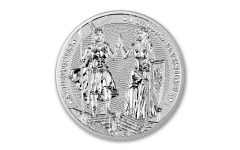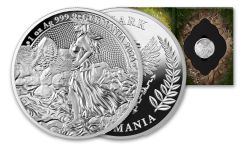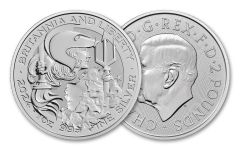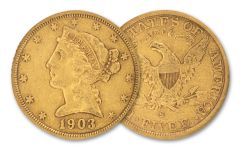Local Storage seems to be disabled in your browser.
For the best experience on our site, be sure to turn on Local Storage in your browser.
Allegorical Female Representations on Coins: Liberty, Britannia, and Beyond
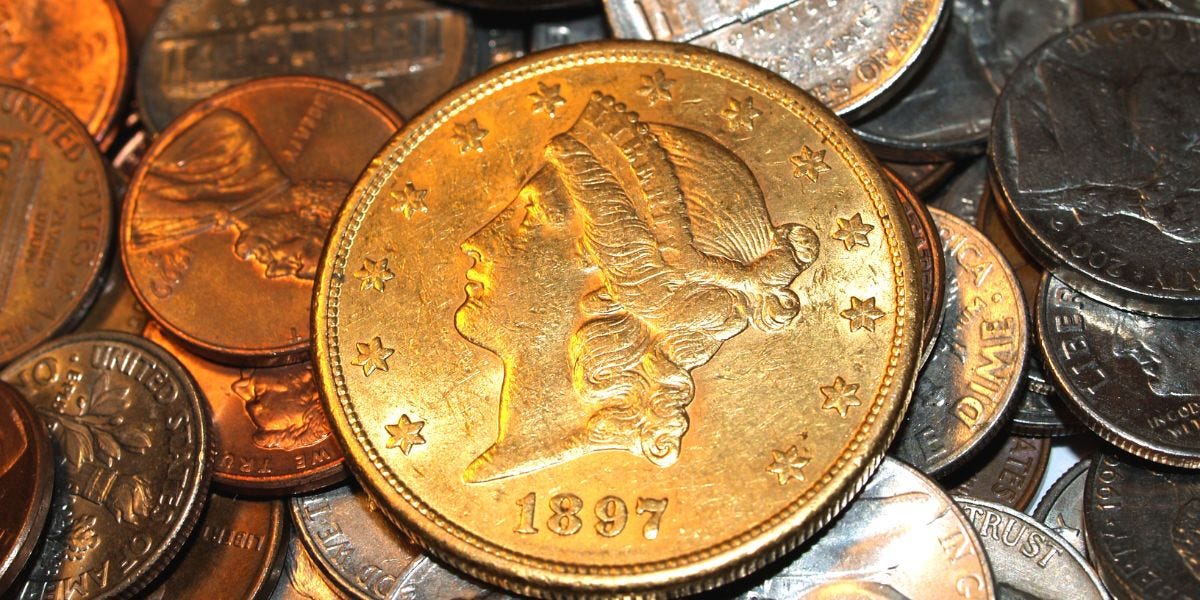
By GovMint:
Images of the female form began appearing on coinage millennia ago, and this tradition continues to be exceedingly important in numismatics today. Ancient Greek coins featured the image of the Goddess of Wisdom, Athena, and other historical women and Goddesses. Roman coins also featured female deities like Libertas, the Goddess of Freedom, and the profiles of powerful women, such as the mothers of Caesars and behind-the-scenes power brokers. Fast forward a few thousand years, and today, the female form continues to be a driving force in numismatics, often symbolizing the ideals and spirits of issuing nations. While the symbolic character of “Lady Liberty” is a prevalent emblem of the founding ideals of the United States, many countries also prominently feature metaphorical female figures on their currency.
Liberty on Coins
In monarchies of old, a currency often carried the image of a governing individual, reinforcing their power over the people they oversaw. After all, one is likely going to give credit to the king or personage on the coin when one buys his meal. Because of this close association with monarchy, the Founding Fathers of the United States decided to break with this monetary tradition. When the need for a uniquely American currency was introduced to Congress, President George Washington was first proposed to appear on the coinage. It was eventually decided and declared in the Mint Authorization Act of 1792 that instead of iconizing a single ruler, “upon each side of said coins there shall be an impression emblematic of liberty, with an inscription of the word Liberty…” This move further removed the new nation from the concepts of monarchy and the singular rule of one man. It also helped establish the American Ideals of freedom and representation for all as the guiding principles for the new nation.
Lady Liberty represents the concepts of individuality, beauty, and self-reliance. The American and French Revolutions were reactions to a political climate designed to empower the elite. These dynamic uprisings would ultimately champion individual representation to empower many people rather than a ruling class or a specific monarch. This distancing from one particular historical person or class was supported using representations of an allegorical ideal like Lady Liberty, the closely associated goddess Columbia, and the French Marianne, on coinage.
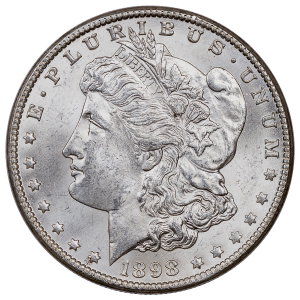

Depictions of Liberty on United States coinage
Although Congress used imprecise language in calling for an “impression emblematic of Liberty” on the obverse of all new federal coinage produced under the Mint Authorization Act of 1792, represent Liberty they did. The United States struck its first coinage featuring Liberty as wearing or almost wearing-- her Roman “Freedom” or Phrygian Cap. The Phrygian cap was a symbol from antiquity that a person was not enslaved. Variations on this image were struck well into the 20th Century for U.S. circulating coinage, although this ended with the 1947 Walking Liberty Half. One of the United States Mint’s most popular modern issues, the American Eagle Series, originates from this iconic reverse design. This famous Adolph Weinman portrayal shows Liberty confidently moving towards the future, holding an oak branch and a laurel, both military and civil symbols, respectively.
The depiction of Liberty has changed considerably over the years, with some mere aesthetic changes and some symbolic ones. Certain designs featured Liberty in a seated position, others standing. More often than not, she is pictured wearing a Freedom Cap or a coronet engraved with the name Liberty. Sometimes, her full portrait is depicted, as in the Standing Liberty Quarter, where she holds an olive branch and a shield, representing both peace and a readiness to defend herself. In others, only her head is depicted, as is the case of the Peace Dollar. She wears the Phrygian Cap and an inscribed crown on the beloved Morgan Silver Dollar. Portrayals of Liberty continued on non-circulating coinage and persist today. Some of the more notable modern variations of Liberty are in the high-relief American Liberty series, which depicts “the different faces of Liberty” to reflect a culturally and ethnically diverse 21st-century America.
Britannia on Coins
Britannia is the best-known of these figures among collectors, for whom Great Britain’s annual gold and silver coins are named. The name originated in Roman times and was initially used for a group of islands. Britannia then came to mean Britain, specifically, the island that includes England, Scotland, and Wales. The personification of Britannia emerged in the second century. She wore a Corinthian helmet and bore a shield and a trident, just as she does in most modern numismatic depictions. Today, the shield usually has a Union Jack, the British flag.
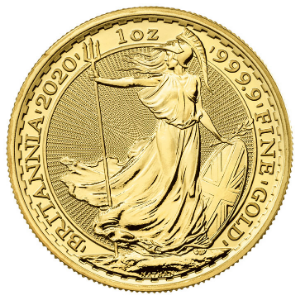

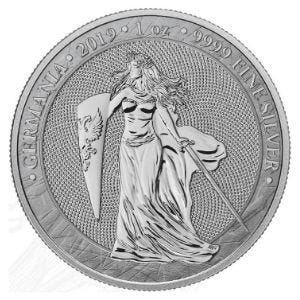

Germania on Coins
Germania is another recognizable figure on coinage. Her associations are mainly with the Romantic Era, the Revolutions of 1848, and Imperial Germany. The private mint, the Germania Mint, annually issues a series of medals depicting Germania in a modern light, reviving the tradition of Germania representing the Germanic area on coins and medals.
Helvetia on Coins
One figure whose association may confuse some is Helvetia, the personification of Switzerland. Like Britannia, the name has its roots in Latin. Helvetii was what the Romans called the Gaulish tribe that lived on the Swiss Plateau before the Romans conquered it. Helvetia is often depicted with a wreath, which, in this case, symbolizes confederation. While other figures are usually shown with a sword and a shield, she traditionally bears a shield and a spear. Recent depictions of her, by contrast, show her with a gun. This change is because she appears on the country’s increasingly popular Shooting Thalers, the national celebration of marksmanship. The wreath in her hand is also more reminiscent of traditional awards given to the festival winners, which symbolized confederation at that time.
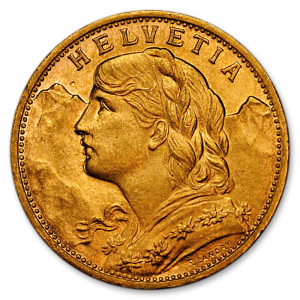

Hibernia on Coins
One of the more complex figures depicted on coins is Hibernia. Coming from the Classical Latin word for Ireland, unionists first used the figure in Punch, a pro-union magazine. She was depicted as vulnerable to Irish nationalism and in need of her big sister, Britannia, to protect her. As a result of these early depictions, Irish nationalists turned to other figures, namely Erin and Kathleen Ni Houlihan, to replace her. Even so, the name continued to be used by Irish nationalists in different contexts. One of the most famous depictions of Hibernia stands atop the General Post Office in Dublin, which was the focal point of the 1916 Easter Rising. That image appeared on Ireland’s 2016 centennial commemorative coins, which were issued in gold and silver.
The Continuing Presence and Contributions of Women to Numismatics
These allegorical figures are some of the most prominent in numismatics, and many have been around for centuries. The varied depictions of women, the symbols they hold, their age, etc., illustrate the diversity of the histories and the cultures with which they have come to be associated. In short, understanding these prominent ladies of numismatics provides a rudimentary understanding of millions of people and their values.
Getting this type of understanding of the coins you are collecting – and ones you are considering adding to your collection – can tremendously increase your appreciation of your favorite hobby. Not only do you get to own art and history, but you also grow in your appreciation of both. You can also get some insight on things you may want to look for as you develop your collection and find new ways to capture the interest of those with whom you share your favorite hobby.
Sources:
https://www.inheritage.org/almanack/american-goddess-female-depictions-of-liberty/
http://rbsc.princeton.edu/capping-liberty/case/6
http://rbsc.princeton.edu/capping-liberty/case/7
https://catalog.usmint.gov/american-liberty-225th-anniversary-gold-coin-17XA.html
Copyright 2020 GovMint. All Rights Reserved. GovMint.com does not sell coins and numismatics as investments, but rather as collectibles. Please review GovMint’s Terms and Conditions, Terms of Use and Privacy Policy before using this website and prior to purchasing from GovMint. All website content is for reference use only and does not constitute investment, legal or financial advice. We encourage the sharing and linking of our information but reproduction of our news and articles without express permission is prohibited. Instead of reproducing, please provide the link to the original article or use the share buttons provided.

